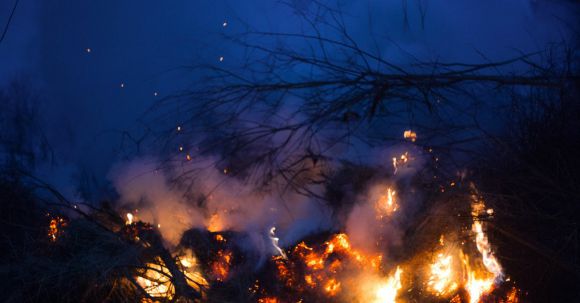Climate change is a pressing issue that affects various aspects of our planet, including wildlife. As temperatures rise and weather patterns become more erratic, the natural habitats of many species are being disrupted, leading to a multitude of negative consequences. This article explores the impact of climate change on wildlife and highlights the urgent need for action.
Shrinking Habitats
One of the most significant impacts of climate change on wildlife is the shrinking of habitats. Rising temperatures and changing precipitation patterns result in the loss of crucial ecosystems such as forests, wetlands, and coral reefs. These habitats provide food, shelter, and breeding grounds for countless species. As they disappear, wildlife populations are forced to migrate or adapt to new environments, often with limited success. This disruption can lead to the decline and even extinction of many species.
Altered Migration Patterns
Climate change also affects the migration patterns of many animal species. As temperatures shift, the timing and routes of migration are being disrupted. Birds, for example, rely on environmental cues such as temperature and food availability to determine when to embark on their long journeys. However, with changing climates, these cues become unreliable, leading to confusion and potential mismatches between arrival times and the availability of resources. This can have severe consequences for the survival and reproduction of migratory species.
Loss of Biodiversity
The loss of habitats and disrupted migration patterns contribute to a larger problem – the loss of biodiversity. Climate change increases the risk of extinction for many species, particularly those with specialized habitat requirements or limited tolerance to temperature changes. As certain species disappear, it disrupts the delicate balance of ecosystems, affecting the entire food chain. The loss of biodiversity not only threatens the survival of individual species but also compromises the resilience and functioning of ecosystems as a whole.
Increased Disease Transmission
Climate change can also facilitate the transmission of diseases among wildlife populations. As temperatures rise, the range of disease vectors such as mosquitoes and ticks expands, increasing the likelihood of diseases spreading to new areas. Furthermore, stressed and weakened wildlife populations are more susceptible to infections, making them more vulnerable to outbreaks. This can have cascading effects on ecosystems, as diseases can decimate populations and disrupt ecological interactions.
Unpredictable Reproduction
Climate change can disrupt the reproductive patterns of many species, leading to declines in population sizes. For example, rising temperatures can affect the timing of breeding seasons, causing mismatches with the availability of food resources. This can result in reduced reproductive success and lower offspring survival rates. Additionally, extreme weather events such as storms and droughts can destroy nesting sites and reduce the availability of food for young animals, further jeopardizing their chances of survival.
Taking Action
The impact of climate change on wildlife is undeniable, but there is still hope. By taking immediate action to reduce greenhouse gas emissions and mitigate the effects of climate change, we can help protect vulnerable species and their habitats. Efforts such as promoting renewable energy, conserving and restoring natural habitats, and implementing sustainable land and resource management practices are crucial in ensuring the survival of wildlife in the face of climate change.
In conclusion, climate change poses a significant threat to wildlife around the world. The shrinking of habitats, altered migration patterns, loss of biodiversity, increased disease transmission, and unpredictable reproduction are just a few of the many ways in which wildlife is being negatively affected. It is essential for individuals, communities, and governments to recognize the urgency of the situation and take decisive action to mitigate climate change and protect the natural world. The future of wildlife depends on our collective efforts to address this global crisis.
